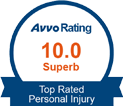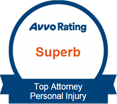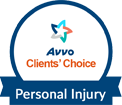Car accidents are common, especially for people who live in California. Across the United States, millions of accidents happen every year. Car accidents can occur due to many factors. However, some causes of road accidents are more common than others. While some accidents occur due to the negligence of vehicle drivers, some other accidents occur due to factors that are beyond the driver. The Personal Injury Attorney Law Firm helps people involved in any type of car accident to seek compensation in California.
Types of Car Accidents
The California law classifies road accidents based on the circumstances around which the accidents occur. Some of the most common types of car accidents in California include:
-
Rear-end Collisions
Rear-end collisions are common types of car accidents in California. In most cases, when a rear-end collision occurs, the rear driver is often to blame. However, you should not assume that the rear driver is always at fault. At times, the collision may occur due to the negligence of the lead driver or a third party. The rear driver may be liable for engaging in distracted driving and also for following too closely.
The lead driver may be at fault for failing to use reasonable care while driving. For instance, the lead driver may engage in reckless driving by pulling in front of another vehicle or breaking suddenly. It is common for lead drivers to reverse carelessly and hit the vehicle behind them. The lead driver may face negligence charges for engaging in road rage. Failing to maintain the vehicle may place the lead driver at fault. For instance, the lead driver may face charges for operating a vehicle with broken tail lights.
Most rear-end collisions occur when the vehicle in front brakes suddenly. In this scenario, the rear driver is quick to blame the lead driver for breaking suddenly. However, both the lead and rear driver may be at fault. The lead driver may be to blame for the abrupt breaking. The rear driver may be to blame for failing to leave the recommended distance between his/her vehicle and the vehicle in front. Following another vehicle too closely is a violation of the California Vehicle Code 21703. The law requires the driver behind to leave a safe distance from the vehicle ahead of him/her. Drivers should always have due regard for the speed of the vehicle ahead and other factors like traffic and the condition of the road.
When determining a safe distance to leave from the vehicle ahead, a driver may consider several factors. For instance, a driver may have to leave a more significant gap due to poor road conditions, wet roads, loose gravel, heavier vehicle weight, soft breaks, and nighttime driving. Other leading factors that cause rear-ends collisions include engaging in distracted driving by the rear end driver. When the rear-end drivers accuse the lead driver of braking suddenly, the law enforcement officers will also consider whether the rear driver was paying attention.
Rear-end collisions also occur when drivers make illegal left turns, U-turns, or fail to yield the right-of-way. A driver may violate the California Vehicle Code 22100.5 for making an illegal U-turn. If you intend to make a left turn or a complete U-turn, the law requires you to yield the right-of-way to all the on-coming vehicles. A driver should not make a U-turn until he/she can make the turn safely. When a driver is making a left turn, it is his/her duty to ensure that the oncoming vehicles are not close to the extent of posing a hazard. If a driver makes a turn without yielding way to oncoming traffic, the driver may be liable.
Rear-end collisions may also involve multiple vehicles. This may occur when a rear car hits the car ahead, which in turn hits the car in front. In a rear-end collision involving multiple vehicles, the driver of the vehicle that initiated the accident is often to blame. However, a multi-vehicle rear-end collision may have several liable drivers.
-
Head-on Collision
The alternative name for a head-on collision is a frontal crash. The accident occurs when vehicles driving in opposite directions, crash front to front. Although any type of car accident may cause damages, head-on collisions result in severe harm. It is common for the fatality of the driver or passengers to occur in a head-on collision. When establishing fault in a head-on collision, the law enforcement officers consider whether one or both drivers were negligent at the time the accident occurred. Just like in other types of car accidents, the negligent driver is responsible for the injuries the victims suffer.
For you to seek compensation after involvement in a head-on collision, you have to prove that the liable driver owed you a duty of care. This is easy to prove because, according to California law, drivers owe a duty of care to all other road users. It must also be evident that the driver breached his/her duty of care. You must prove that your injuries mainly resulted from the driver's breach of his/her duty of care. Drivers can exercise care while on the road by being careful while operating a vehicle. A driver also has to look out for pedestrians, other vehicles, and obstacles. A driver also has to control the movement and the speed of a vehicle.
Some of the instances of negligence that may lead to a head-on collision include careless overtaking without ensuring that the road is safe. A head-on collision may also occur if a driver engages in road rage. Failing to yield the right-of-way when turning in front of oncoming traffic may lead to a collision. Drowsy driving and distracted driving are also common causes of head-on collisions.
The leading causes of head-on collisions in California include making U-turns and Left-turns in front of oncoming traffic. If a driver makes a turn at a controlled intersection or makes a left turn without yielding to oncoming traffic, a head-on collision may occur. Head-on collisions account for the majority of fatal accidents in California. At times, you may be partly to blame for the head-on collision. Even in this instance, you may still be able to seek compensation. California is a comparative fault state. Therefore, even if you are partly to blame for an accident, you may get compensation less your degree of fault.
You may get into a head-on collision with an uninsured driver. In California, the law requires all drivers to carry minimum insurance. You may also opt to obtain an uninsured or underinsured motorist cover. If you have an uninsured or underinsured cover and you get into an accident with an uninsured driver, this insurance coverage may compensate for your damages. This cover will compensate for your damages if the other driver does not have car insurance. The uninsured or underinsured cover may come in handy if the liable driver's insurance policy does not have enough coverage to meet the victim's damages.
-
Side-impact Collisions
The other name for a side-impact collision is a T-bone accident or a broadside collision. This type of accident occurs when a vehicle crashes on the side of another vehicle head-on. Side-impact collisions typically occur at vehicle intersections. The accident may also happen if a driver loses control of his/her vehicle. The accident may also occur when a driver is crossing a multi-lane highway.
Side-impact collisions are usually fatal, and the resulting injuries are severe than the damages, which result from head-on collisions or rear-end collisions. If a vehicle gets into a head-on collision with another car, the airbags may protect the vehicle occupants. However, in a side-impact crash, there is a thin layer of protection between the passengers and the outside of the car. The resulting injuries also tend to be severe if the victims are trapped inside the vehicle and, therefore, not able to seek medical attention in good time.
There are several causes of T-bone accidents in California. An accident may occur when a driver engages in reckless driving. Reckless behavior includes speeding. Side-impact collisions also occur when a driver runs the red light. Running the red light entails failing to obey the traffic lights. A driver may run a red light by proceeding when the traffic light is red, yet the law requires a driver to wait until the traffic light turns green.
A driver may also cause a side-impact collision by engaging in distracted driving. A driver may engage in distracted driving by operating the phone while driving. Eating while driving or drowsy driving are also forms of distractions and may lead to side-impact collisions. Failing to yield the right-of-way to oncoming traffic may cause side-impact crashes at intersections. A driver may also cause a T-bone accident by driving under the influence of alcohol or drugs.
The injuries that victims suffer in a side-impact collision depend on several factors. The factors include the angle of impact and the speed of the collision. Other factors that determine the extent of injuries include the presence of safety features in a vehicle, including airbags and seatbelts. The vehicle type also determines the types of injuries that victims suffer. Some of the common types of damages that victims are likely to suffer include back injuries, neck injuries, brain trauma, and head injuries. Victims may also experience facial trauma and internal injuries due to the significant impact of a T-bone collision. Injuries from a side-impact collision are usually catastrophic and have far-reaching effects. Victims are likely to experience the negative effects of the accident for many years.
Car Accidents Involving Pedestrian Knockdowns
It is common for car accidents in California to involve pedestrian knockdowns. Accidents involving pedestrian knockdowns occur when vehicles fail to yield to pedestrians. When car drivers violate the California Vehicle Code 21663 and drive on the sidewalk, pedestrian knockdowns may occur. If you are walking by the side of the road and a car hits you, you may be able to seek compensation by consulting a personal injury attorney. The same case applies if a vehicle hits you while you are in the parking lot or a crosswalk. The driver responsible for knocking you down may be responsible for the injuries you suffer.
According to California law, drivers owe a duty of care to all pedestrians. You may receive compensation if you feel that a driver breached his/her duty of care towards you. You have to prove that the driver's breach of duty of care was a significant factor in causing your injuries.
If a car driver drives his/her vehicle too close to the sidewalk, he/she may end up hitting pedestrians using the vehicle side mirrors. The side mirror may pose a risk to any person standing close to the edge of the sidewalk. If a car's side mirror knocks a pedestrian, the pedestrian may fall and suffer serious harm, including head injuries. Car drivers should understand how their vehicle's side mirrors extend. However, if a driver fails to pay attention and ends up hitting a pedestrian with the side mirror, the driver may be responsible for the victim's injuries.
The kind of injuries a victim suffers in a pedestrian knockdown accident may depend on several factors. The factors include the cause and the location of the accident. Also important is the physical attributes of the victim. In case of a pedestrian knockdown accident, ailing or aged victims may suffer more severe injuries. What may seem like a minor pedestrian accident may lead to severe neck, back, and head injuries.
Some of the most common injuries that victims suffer in pedestrian knockdown accidents include lacerations, cuts, and bruises. Victims may also suffer from facial trauma and broken bones. It is common for victims to suffer internal injuries, brain injuries, and concussions. Injuries resulting from pedestrian knockdown accidents are often severe because the victims come into direct contact with the vehicle. This leads to catastrophic injuries that may alter the victim's life forever. Any person can suffer severe injuries in a pedestrian accident. However, some people have higher risk factors for suffering severe pedestrian accidents. These people include children and older people.
After involvement in a pedestrian accident, it is advisable to seek immediate medical attention, especially if you have suffered severe injuries. You may also inform the police or request another person to call the police on your behalf. You may not experience pain immediately after a knockdown. The body gets numb from the impact of the vehicle. Do not assume that you are okay, even if you do not have visible bruises. You should undergo a medical evaluation to help identify any underlying injuries. You may feel okay immediately after the accident only for you to experience pain and suffering later.
Car Accidents Involving Drunk Drivers
Numerous car accidents occur in California when drivers engage in drunk driving, commonly known as driving under the influence. According to California Vehicle Code 23152 VC, it is a crime to operate a vehicle while intoxicated. A person should not drive if you are under the influence of alcohol or drugs, as outlined by Vehicle Code 23152 (a). A driver is under the influence if his/her blood alcohol concentration is .08% or more. If you suffer injuries in the DUI car accident, you are entitled to compensation from the negligent driver. Driving under the influence is a form of negligence, according to California law. If alcohol or drugs have impaired a driver's physical and mental abilities, and the driver can no longer reason or perform like a sober person, he/she is under the influence.
California State has strict DUI laws for commercial and underage drivers. A commercial driver should not operate a vehicle with a blood alcohol concentration of more than .04%. If a commercial driver operates a commercial vehicle across states, he/she will be subject to federal safety laws in addition to the California DUI laws. California has zero-tolerance laws for drivers below the age of 21 years. An underage driver should not have the slightest concentration of alcohol in their blood while operating a vehicle. An underage person should not have or possess alcohol in his or her vehicle.
There are many forms of DUI car accidents in California. A DUI accident may have mitigating factors of aggravating factors. Aggravating factors are factors that may make a driver face enhanced penalties for causing a car accident while intoxicated. For instance, a driver may face enhanced charges if victims suffer significant bodily injuries due to his/her drunk driving. A driver may also face enhanced penalties if he is a repeat offender. California imposes enhanced penalties for repeat DUI offenders to discourage drivers from engaging in drunk driving.
A driver will also face enhanced penalties if a patient dies in a DUI accident. Depending on the circumstances of the case, a driver may face murder charges, commonly known as Watson murder charges when a victim dies in a DUI accident. Other aggravating factors in DUI car accidents include recording a high BAC level.
Mitigating factors reduce the penalties the liable driver is likely to face after causing an accident. The court may reduce the liable driver's penalties if he/she is a first-time DUI offender. If the DUI car accident does not result in injuries or death of victims, the driver may face lesser charges. While establishing whether a driver is under the influence, the police combine various chemical testing procedures. The law police may also subject the suspect to several field sobriety tests to determine whether he/she is under the influence. If the suspect refuses to submit to chemical tests, he/she will face additional charges for chemical test refusal.
-
Rollover Car Accidents
When rollover accidents occur, the injuries that result are often fatal or catastrophic. Rollover accidents have a high severity. Light passenger cars, including sports utility vehicles, are prone to rollovers. When a rollover accident occurs, passengers may be ejected from the car. The roof of the car may also collapse on the vehicle occupants. Unlike other types of car accidents that involve two or more vehicles, rollover car accidents involve one vehicle.
Many cars rollover after tripping; a vehicle may trip when its tires hit an object like a bump of soil or a curb. Hitting an object disrupts the forward motion of the car, making the car rollover. Other factors that may lead to vehicle rollover include poor road conditions, the vehicle's design, or defective tires. Several parties may be liable for a rollover accident. Potential defendants include reckless drivers, vehicle designers and manufacturers, and tire manufacturers. You may sue the vehicle manufacturer if you feel that the accident occurred due to a design or manufacturing defect in a vehicle. The manufacturer has a legal obligation to give special warnings about any design or manufacturing defects that may pose a risk while using a vehicle. You may file a product liability lawsuit if a rollover accident occurs due to defective tires. You will need a competent attorney while filing a product liability lawsuit.
If a rollover accident occurs due to poor road conditions, the government may be liable for failing to maintain the roads. Poor weather conditions and other natural factors may lead to a rollover accident.
-
Single Car Accidents
These refer to car accidents that involve one vehicle. Accidents may occur due to several factors. The most common causes include collisions with fallen debris, run-off-road collisions, and collisions with animals. In case of a collision with fallen debris, the victims may sue the persons responsible for leaving the debris on the road. In the case of a collision with animals, the animal owners may be responsible for failing to restrain their animals.
Irrespective of the type of car accident you get involved in, you may seek compensation for the injuries suffered. With the help of a qualified personal injury attorney, you may receive compensation for both economic and non-economic damages. Economic damages comprise of medical expenses, lost wages, and loss of earning capacity. Non-economic damages include pain and suffering, emotional distress, and loss of consortium. In case of death of the victim, the surviving family members may file a wrongful death claim to seek compensation.
Contact a Personal Injury Attorney Near Me
After suffering injuries in a car accident in California, you will need a qualified attorney to guide you through the personal injury claim process. The Personal Injury Attorney Law Firm assists people who have suffered injuries due to the negligence of others. Contact us at 619-625-8707 and speak to one of our experts.
 800-492-6718
800-492-6718







